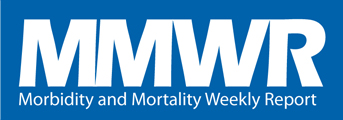MMWR News Synopsis for November 3, 2016
- Effects of Maternal Age and Age-Specific Preterm Birth Rates on Overall Preterm Birth Rates — United States, 2007 and 2014
- Ocular Syphilis — Eight Jurisdictions, 2014–2015
- Recommendations for Use of Meningococcal Conjugate Vaccines in HIV-Infected Persons — Advisory Committee on Immunization Practices, 2016
Effects of Maternal Age and Age-Specific Preterm Birth Rates on Overall Preterm Birth Rates — United States, 2007 and 2014
CDC Media Relations
404-639-3286
Successful teen pregnancy prevention efforts have helped reduce the number of babies born too soon. Fewer births to U.S. teens and young mothers between 2007 and 2014 translated to lower preterm birth rates. These findings point to a dual benefit of teen pregnancy prevention efforts; preventing teen pregnancy also helps to reduce the number of babies born too soon. Researchers used age-specific data on trends in births overall and in preterm births to determine the effects of changes in maternal age on preterm birth. Declines in births to teens and other mothers under 25 years had the largest impact on the overall decline in the preterm birth rate. Increases in births to mothers 30 and older, who have higher rates of preterm birth, lessened the overall decline. This report underscores that, because risk factors for preterm birth can vary by age, healthcare and public health professionals should work with women during each stage of their reproductive life to address risk. CDC promotes a five-part strategy to prevent preterm birth, including preventing unintended pregnancy and improving access to care to help women enter pregnancy as healthy as possible.
Ocular Syphilis — Eight Jurisdictions, 2014–2015
CDC Media Relations
404-639-3286
All patients diagnosed with syphilis who have ocular manifestations should be immediately treated for neurosyphilis and should be referred for formal ophthalmologic examination. Additionally, all patients with inflammatory eye disease without a known cause should have an evaluation of syphilis, regardless of risk factors. Ocular syphilis is an inflammatory eye disease caused by syphilis infection. Signs and symptoms include redness, blurry vision, and vision loss. Clusters of ocular syphilis were reported in 2015, suggesting an outbreak of ocular syphilis. Cases of ocular syphilis were evaluated in eight jurisdictions over a two-year period. Most jurisdictions reported an increase in ocular syphilis cases from 2014 to 2015. Ocular syphilis was diagnosed in all stages of syphilis and in both HIV-positive and HIV-negative patients. The increase in cases could be due to increased recognition or to a true increase in the proportion of syphilis cases with ocular disease. Prompt identification of ocular syphilis, urgent ophthalmologic evaluation, and appropriate treatment are critical in the prevention and management of visual symptoms of ocular syphilis.
Recommendations for Use of Meningococcal Conjugate Vaccines in HIV-Infected Persons — Advisory Committee on Immunization Practices, 2016
CDC Media Relations
404-639-3286
HIV-infected people age 2 months or older should routinely receive meningococcal conjugate vaccine. At its June 2016 meeting, the Advisory Committee on Immunization Practices (ACIP) recommended routine use of meningococcal conjugate (serogroups A, C, W, and Y) vaccine for people age 2 months or older with human immunodeficiency virus (HIV) infection. ACIP has previously recommended routine vaccination of people age 2 months or older who have certain medical conditions that increase risk for meningococcal disease. Routine vaccination with meningococcal conjugate vaccine is also recommended for all healthy adolescents in the United States.
Progress Toward Poliomyelitis Eradication — Afghanistan, January 2015‒August 2016
CDC Media Relations
404-639-3286
Afghanistan showed signs of progress towards the eradication of polio during January 2015‒August 2016, but faces considerable challenges in its quest to interrupt wild poliovirus circulation by the end of the year. To address these challenges, the national Polio Eradication Initiative must act with urgency to improve the quality of supplementary immunization activities and adopt innovative strategies for reaching children in security-compromised areas. During 2015, the number of wild poliovirus cases reported in Afghanistan declined by 29% compared with 2014. Trends observed so far in 2016 suggest that poliovirus circulation in the country is limited to a few areas. The drop in the number of polio cases in Afghanistan mirrors global trends, which were at a historic low in 2015. Despite this progress, Afghanistan faces significant constraints in its quest to interrupt poliovirus circulation by the end of the year. The deteriorating security situation in the Eastern and Northeastern regions of the country considerably limits the ability to reach and vaccinate children in these regions, and substantial numbers of children are still being missed in areas that are accessible during polio immunization activities.
Notes from the Field:
- Rift Valley Fever Response — Kabale District, Uganda, March 2016
QuickStats:
- Death Rates for Motor Vehicle Traffic Injuries, Suicide, and Homicide Among Children and Adolescents Aged 10–14 Years — United States, 1999–2014
###

